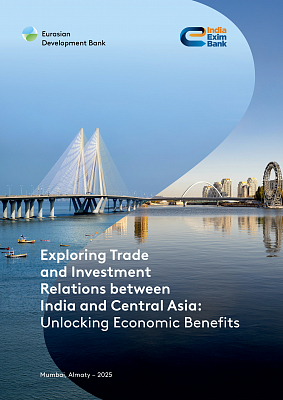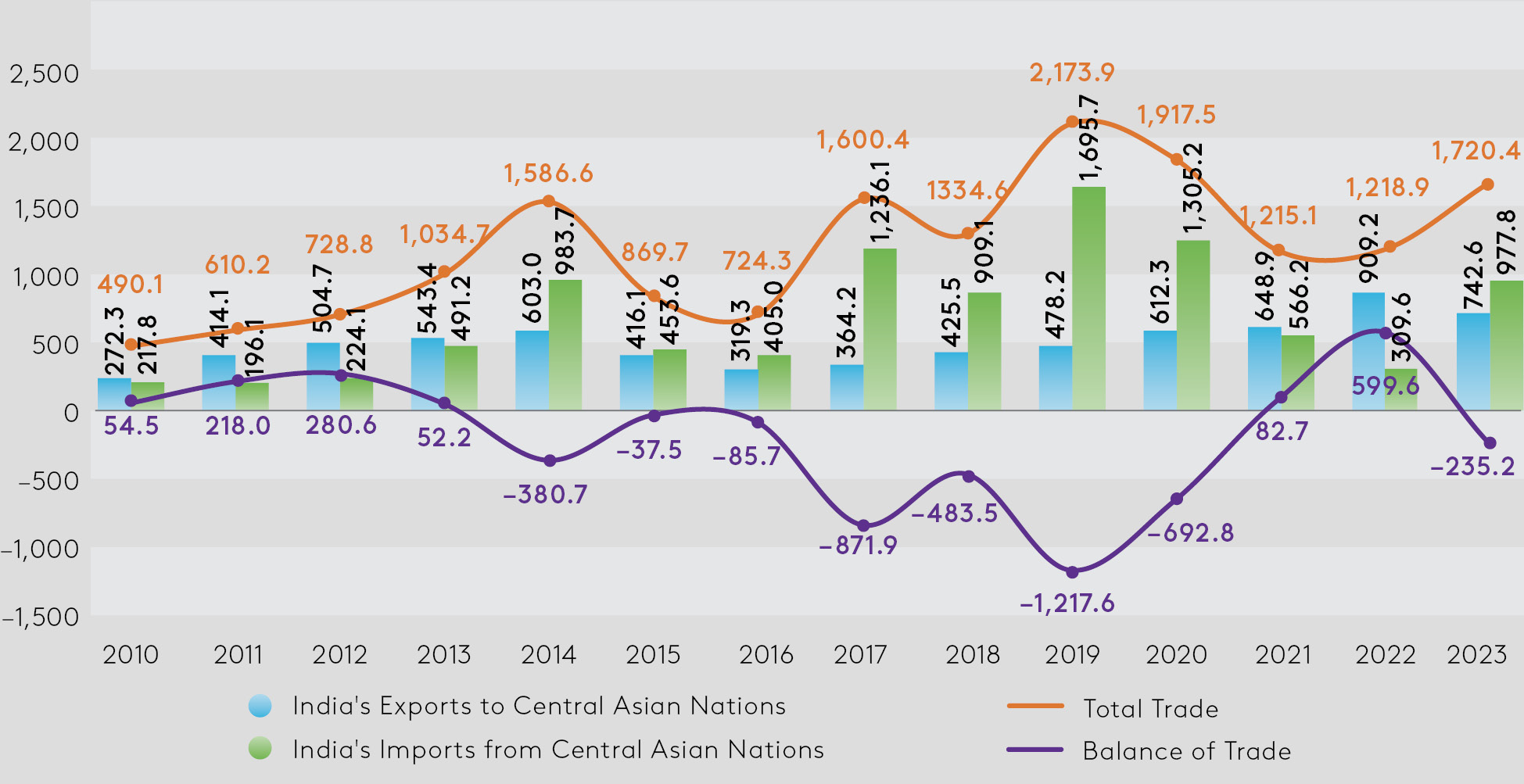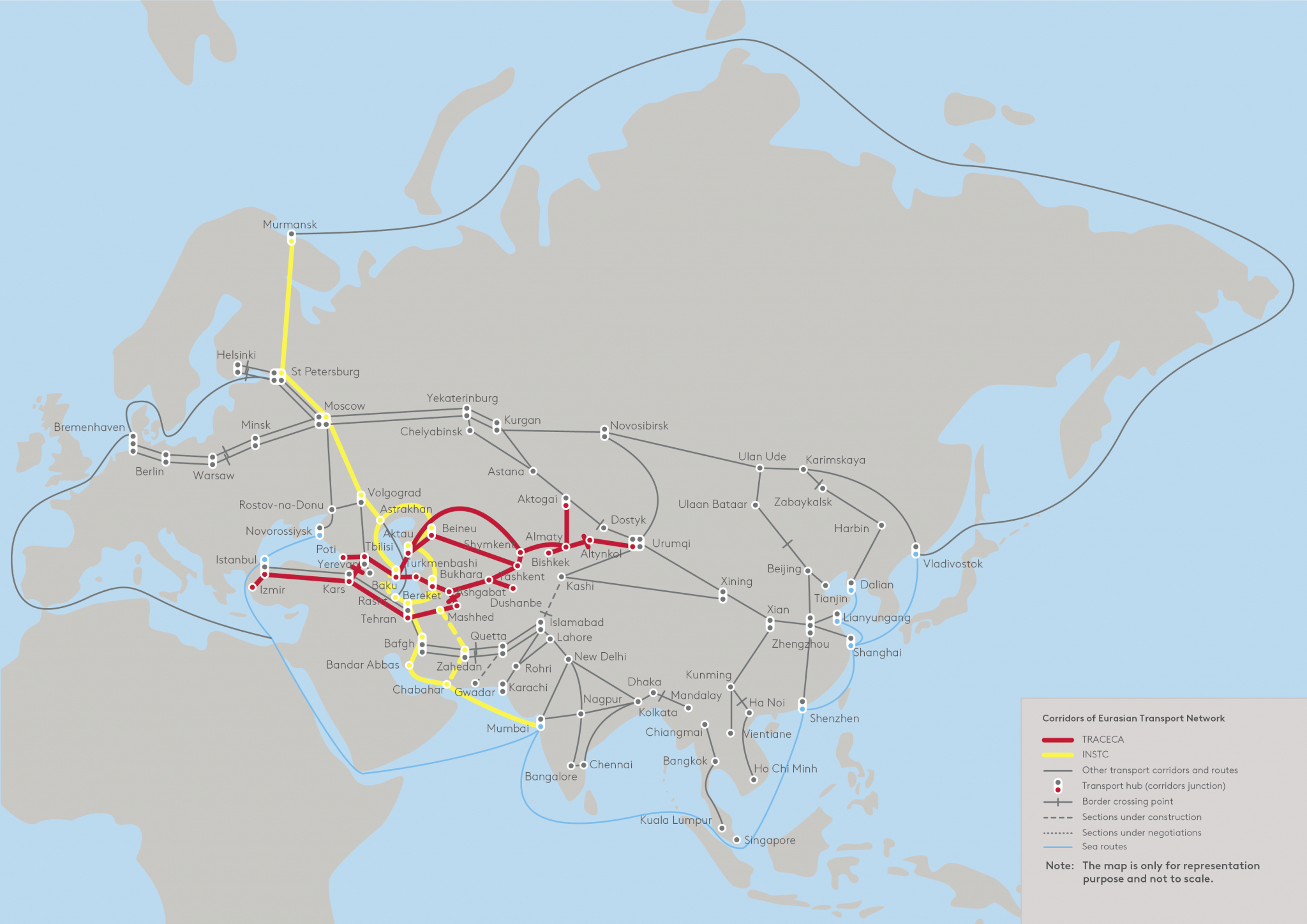Exploring Trade and Investment Relations between India and Central Asia: Unlocking Economic Benefits

-
Report
PDF, 3.90 Mb -
Presentation
PDF, 2.24 Mb -
Summary
PDF, 1.09 Mb -
Key findings
JPG, 1.55 Mb
The report analyses the untapped potential of mutually beneficial cooperation between India and Central Asia.
Central Asia and India among the fastest growing economies of the globe. Since 2010, their economies have expanded by about 2 times. India's GDP has exceeded $3.6 trillion, thus making the country the world's fifth-largest economy. Central Asia has a relatively smaller aggregate GDP (over $500 billion). Both India and the Central Asian countries continue demonstrating high rates of economic growth. This vast potential should be used by the countries to form new trade and investment ties.
Most of the countries of Central Asia are landlocked. There are no well-developed land routes connecting India and Central Asia. This fact predetermined the weak trade and investment ties between India and Central Asia. Nevertheless, the countries do have an opportunity to change this situation by working together and extracting economic benefits from their cooperation. Due to the strategic position of Central Asia as a land bridge between Asia and Europe, the region is of great geopolitical importance for India.
Trade relations between India and the countries of Central Asia have been on an upward trajectory. Mutual trade has grown 3.5 times since 2010 and amounts to about $1.7 billion. India's exports witness steady growth (average annual growth of 10.6%). The key commodity of India's exports to Central Asia is pharmaceutical products (37.9% of the structure of exports in 2023). The main buyers are Uzbekistan and Kazakhstan (45.3% and 35%, respectively). In 2023, India imported mainly mineral fuels and oil from Central Asia, which accounted for 35.3% of imports. The leading regional suppliers of goods to India are Kazakhstan (64.5%) and Turkmenistan (21.7%).
Figure 1. Trade between India and Central Asia.

Investment ties between India and Central Asia are mostly one-way and limited. The total volume of investments in Central Asia received from India is estimated at $1.5 billion. Reverse flows are insignificant. Indian investors have shown the greatest interest in the resource and raw materials sector of Central Asia. The total volume of their investments in the coal, oil and gas industries is 65.5%.
Indian companies have broad prospects for investments in such economy sectors of Central Asia as logistics and transport, agriculture, pharmaceuticals, and oil and gas industry. India may become an important source of know-how exports. Indian companies have the experience and manpower to make a significant contribution to the development of Central Asian infrastructure in a number of areas, from financial services to subcontracting, design engineering and management consulting.
A list of products that may be of interest to exporters in India and Central Asia:
- In terms of exports of Indian goods to Central Asia, the list includes machine tools, land transport, electrical machinery and equipment, ferrous metal products, pharmaceutical products, optical, photographic and surgical equipment, clothing, chemical products, cereals, as well as plastics and plastic products.
- Central Asian countries can significantly increase exports of such goods as mineral fuels, fertilizers, inorganic chemicals, rare earth metal compounds, etc.
Another promising area of cooperation: creation of joint ventures and technological cooperation in such sectors as petrochemical industry, renewable electricity production, textile industry, tourism and hospitality, food production and processing, healthcare, medical equipment manufacturing, pharmaceutical industry, chemical industry, engineering and construction equipment, transport and logistics sector, etc.
The insufficiently high productivity of the transport and logistics sector among the most important obstacles to the development of trade relations between India and the countries of Central Asia. High costs reduce both the competitive capacity of the supplied goods and the volume of mutual trade. A significant contribution to the expansion of economic cooperation can be made by constructing multimodal freight transport and logistics hubs, modernizing border crossings, attracting investments in the construction, modernization and reconstruction of transport infrastructure facilities, as well as improving intangible infrastructure (harmonization, coordination, digital transformation).
More intensive development of trade and investment cooperation is possible under the following conditions:
- Trade development with the focus on goods with the highest export potential.
- Establishment of joint ventures and active technological cooperation in order to increase local brand recognition, technology and knowledge transfer.
- Expanding access to trade finance instruments and other financial services for small and medium enterprises on both sides.
- Improving the efficiency of transportation and logistics, trade and customs procedures.
Figure 2. Corridors of the Eurasian Transport Network

